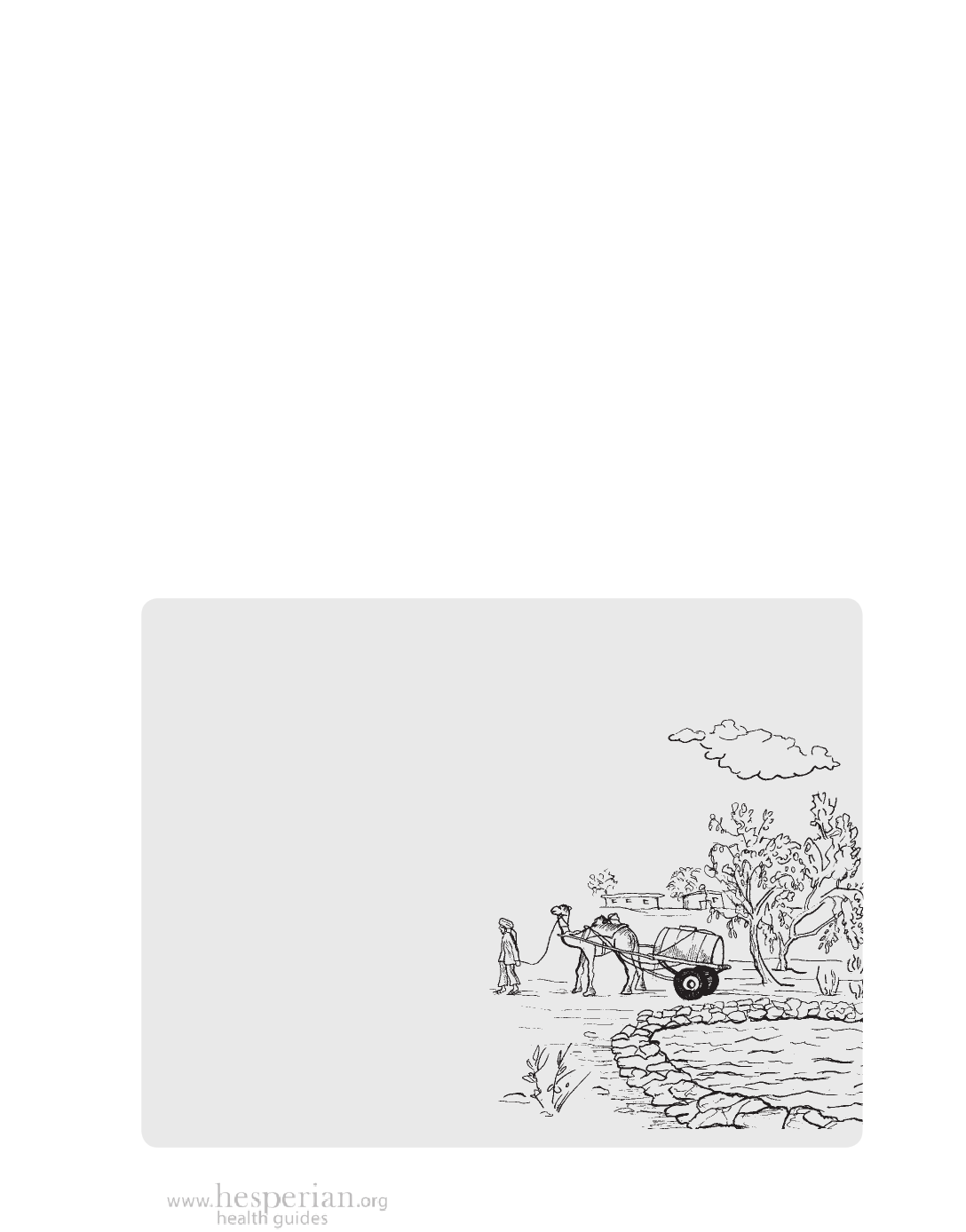
Collec t Rainwater
87
Make rainwater safe to drink
Rainwater must be kept free of contamination to be safe to drink. To make sure
the water you collect will be safe:
• Clean the tank, entrance pipe, roof, and roof gutters before the rainy
season.
• Never collect water in containers that have been used for oil, pesticides,
or other toxic chemicals.
• Allow the first rains of each year to run through the tank to clean it.
• Cover the tank and place a filter or screen over the inlets to keep out insects,
leaves, and dirt. This will also help prevent mosquitoes from breeding.
• Take out water through taps, if possible. If water is removed with buckets
or other containers, make sure they are clean.
• For added safety, add chlorine to the tank (see page 99) or connect a
water filter to the tank (see page 96).
• Do not stir or move the water. That way, any dirt or germs in the tank
will settle and stay at the bottom.
• Sweeping the roof from time to time will also help keep collected
rainwater clean.
Collecting rainwater in the desert
One way rainwater is collected in the Thar Desert of Rajasthan, India, is in
village ponds, called naadi. Everyone in the village, and even people passing
by, may use naadi water.
Everyone in the village works together to maintain
the naadi. Ancient laws prohibit any trees from being cut
near the edges of the naadi, or in the area where rainwater
collects and runs into the naadi. Animals are kept away from
the naadi, and people are not allowed to urinate or defecate
near the naadi. Once a month, on the day
of no moon, the entire village works to
dig out any sand and silt that has
collected in the naadi. Digging
out the naadi makes it deeper
and also removes germs that
may have settled on the bottom.
After digging it out, the villagers
allow the water to settle so it
becomes clear again. In these ways
the community comes together to
protect their water.
A Community Guide to Environmental Health 2012